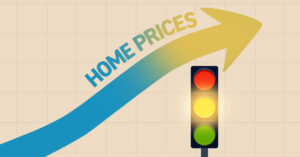The August jobs report from the U.S. Bureau of Labor Statistics was solid but unspectacular, with total nonfarm payroll employment up by 315,000 during the month.
That’s more than economists expected, with experts surveyed by Reuters predicting a payroll bump of 300,000. Nationwide employment now sits 240,000 jobs above its pre-pandemic level, with August marking the 20th consecutive month of job gains.
Job additions were broad based across many industries, led by professional and business services at 68,000 new positions. Health care added 48,000 jobs, retail tacked on 44,000, and leisure and hospitality added 31,000. The latter figure is interesting, given that leisure and hospitality averaged an uptick of 90,000 jobs per month during the first seven months of this year. And while the industry’s gains were strong to open the year, employment in the sector is still 1.2 million jobs below where it was before the COVID-19 pandemic struck.
Other sectors that saw notable gains were manufacturing, which added 22,000 jobs, and construction, which added 16,000.
“Residential building construction employment increased by 2,300 in August while nonresidential employment picked up by 700,” said Odeta Kushi, deputy chief economist for First American Financial Corp. “Residential building employment is up 7.7% compared with pre-pandemic levels while nonresidential building employment remains 5% below. … The big gains this month came from specialty trade contractors, both residential and nonresidential.”
The total jobs increase in August is quite a step back from July’s swell of 526,000 new positions. Average hourly earnings gains slowed as well (up 0.3%), but according to Wells Fargo economists, the labor market “cooled in all the right ways in August, at least as far as the Fed is concerned.”
Despite the moderation in job gains, the healthy increase in August suggests continued stout demand for labor, even with inflation high and the economy at large uneven. And the labor-force participation rate grew by 0.3 percentage points in August to 62.4%, the highest since March 2020. The climb in participation was encouraging, even though it helped push the unemployment rate to 3.7%.
“While the more moderate gain in payrolls suggests somewhat weaker demand for workers, a more balanced picture of the labor market is emerging thanks also to improving supply,” Wells Fargo economists Sarah House and Michael Pugliese wrote. “The unemployment rate rose to a six-month high of 3.7%, but for ‘good’ reasons.
“The pickup in household employment alongside slower payroll growth puts the two measures in closer alignment and provides a clearer message that while slowing, job growth is hardly collapsing. … The greater availability of workers ushers in a key factor to tamping down the inflation pressures being generated from the jobs market without completely torpedoing demand.”
Taken as a whole, the August jobs report may push the Federal Reserve’s needle toward a rate hike of 50 basis points (bps) at its September policy meeting, as opposed to the 75 bps increases seen recently — although the report certainly doesn’t offer enough proof on its own for the move. In foreshadowing the Fed’s next policy move, the focus now shifts to consumer price data that is set to arrive before the Sept. 20-21 meeting.
“The Fed may feel a little sigh of relief that the super-hot labor market is showing some signs of slowing, but this report is not enough to alter the Fed’s course,” Kushi said. “The inflation data will be key to the [Fed’s] decision on rates.”





